Photographs: Courtesy Udayan Rao Pawar Abhishek Mande Bhot
Britain's Natural History Museum and BBC Wildlife magazine names 14-year-old Udayan Rao Pawar the Young Wildlife Photographer of the Year. Abhishek Mande Bhot reports
Using an entry-level DSLR camera, Udayan Rao Pawar took a photograph of the endangered gharial with her hatchlings in June last year. That picture won Udayan, 14, the title of Young Wildlife Photographer of the Year from Britain's Natural History Museum and BBC's Wildlife magazine.
Udayan is a student of class nine at Little Angels School in Gwalior, Madhya Pradesh, and at first comes across as just another teenager whose life revolves around school, tuition classes, soccer games and television. It takes some prodding before he reveals his interest in wildlife.
He has been involved in wildlife conservation projects with the government of Madhya Pradesh -- the gharial, a mostly fish-eating crocodilian, is his special interest -- and has been photographing animals and birds in their natural habitats around the country. He has traveled extensively, from remote forest areas around his hometown of Gwalior to parts of the neighboring state of Rajasthan and as far as north Sikkim and Arunachal Pradesh.
The award-winning photograph of the gharial was shot in the Sheopur district of northern Madhya Pradesh, which had its first tryst with wildlife history about a hundred years ago.
The Indian teen who bagged Natural History Museum's photography award
Image: The photograph that won Udayan Rao Pawar the Wildlife Photographer of the Year 2013.Photographs: Udayan Rao Pawar/Wildlife Photographer of the Year 2013 Abhishek Mande Bhot
At, then viceroy of India, Lord Curzon's behest, the maharaja of Gwalior released African lion cubs into the forests near Sheopur in northern Madhya Pradesh. Unfortunately, the lions, as adults, went on to raid livestock while some others turned man-eaters. Eventually, all of them were tracked down and shot dead.
"My uncle told me of some ruins in Sheopur (remains of the place from where the lions were released) and I also learnt that there was also a nesting colony of gharials in the area," Udayan says over the phone from Gwalior. "By the time we reached the spot it was late evening and we were losing light. So my father and I spent the night in a village about a kilometer away from the (Chambal) river."
The next morning, the two woke up at about 4 am and set out towards the river. Udayan crept behind a large rock, while his father stayed farther away from him. Before long, Udayan heard grunting sounds of the hatchlings and before he knew it, a large female gharial emerged. Some hatchlings climbed onto her head, presumably to feel safe, says Udayan.
According to the World Wildlife Fund there are about 1,200 gharials in the wild today. The Chambal river, where Udayan shot his award-winning photograph, is one of their last nesting colonies in the world.
The reptile, which can grow to nearly 23 feet in length and feeds on fish, frogs, insects and crustaceans, is listed as critically endangered. It is hunted for its skin, and eggs (which are eaten by people), and is now found in the wild only in India.
The Indian teen who bagged Natural History Museum's photography award
Image: This photograph of the painted francolin was shortlisted last year, though it never made it to the finals.Photographs: Courtesy Udayan Rao Pawar Abhishek Mande Bhot
Udayan reported over a 100 hatchlings that morning to the state government forest department. He says that only two to three of 100 hatchlings end up surviving. "There is a lot of illegal fishing in the area, which results in the death of many young hatchlings," he says.
In the course of an hour, he shot about six or seven frames. While he did see a few more adult gharials in the area, none came close. But by then, unknown to him, Pawar had already got his award-winning shot.
His photograph beat 43,000 entries from 96 countries.
Even so, the young photographer says he wasn't thinking of the award when he shot the picture. "I knew I had a good photograph but one of my pictures had been shortlisted last year too and it never made it to the final list."
So when he received an e-mail earlier this year from the authorities asking for the raw version of his photograph — as is the practice for the shortlisted images — he tried to keep his excitement down.
Udayan's Facebook page is flooded with congratulatory messages and his friends and relatives have been calling in constantly, though the boy seems rather unfazed by the attention.
For now he is just recovering from the jetlag. For most part of last week, he was in London to receive the award.
The Indian teen who bagged Natural History Museum's photography award
Image: Udayan Rao Pawar has travelled extensively to photograph animals and birds. This picture is of the Small Buttonquail with its chick. The specie is unique because the male takes care of the young ones.Photographs: Courtesy Udayan Rao Pawar Abhishek Mande Bhot
For Udayan's father Amar Singh Pawar, a Scindia school graduate, this was a moment when his faith in his son's hobby was vindicated.
Amar Singh says that he'd noticed his son's interest the nature many years ago: "As far as I remember, he was always keenly aware of his surroundings — the trees, plants, birds. By the time he was 9, he had become passionate about it. It is difficult to say no to him. He is so driven (by the idea of wildlife photography and conservation) I find it difficult to turn down his requests for traveling to so many places!"
Parents who've had budding photographers in their family will tell you how expensive a hobby it is, and wildlife photography more so.
However the Pawars seem to have been encouraging the young lad. "When I was 9, my uncle gifted me a pair of binoculars. Later my father gifted me a field identification book (for birds) and then a fixed lens zoom camera. Later he let me upgrade my equipment," Udayan says.
The father-son duo travel together. "I haven't traveled a lot in the South (India), so that's next on my list," Udayan says.
The Pawars are into agriculture, growing wheat, paddy and sugarcane among other crops. Udayan's uncle was an Indian Police Service officer and had served in
the Sheopur district and was responsible for pointing his nephew to the nest.
The Indian teen who bagged Natural History Museum's photography award
Image: Pawar took this picture of the Tibetan Sandgrouse at the Tso Lhamu plateau of North Sikkim at some 17,000 feet, braving chilly winds.Photographs: Courtesy Udayan Rao Pawar Abhishek Mande Bhot
Udayan confesses that his isn't a household where wildlife is part of everyday dinner-table conversation, though he adds that his father has been interested in the wild outdoors and accompanies him during every vacation to a new remote destination the young photographer chooses. Among the places he's traveled to with his dad, Udayan has a soft spot for Rajasthan where he's taken pictures of sandgrouses.
His most challenging photograph also happens to be of a sandgrouse, this one shot at 17,000 feet, braving chilling winds at the Tso Lhamu plateau in Sikkim.
When he traveled to London to collect his award at the Natural History Museum, it was his first trip overseas. He admits to being in awe of the grandeur of the museum's building. He attended several functions including the award ceremony and even addressed a press gathering. You can tell it was perhaps the most surreal week in his life so far.
The Young Photographer of the Year Award comprises a £1,000 ($1,604) cash reward, a trophy and a master class with a leading photographer.
In Udayan's case it will, most likely be Steve Winter, the well-known wildlife photographer who was one of the judges on the competition. Whenever it happens, it will also be Udayan's first formal introduction to photography. "There are no photography classes (of repute) in Gwalior so I had to teach myself. I read, tinkered around with my camera and figured how to use it," he says matter-of-factly.
The Indian teen who bagged Natural History Museum's photography award
Image: Udayan Rao Pawar shot this photograph og the Blood Pheasant, the state bird of Sikkim in the Thangu region of north Sikkim.Photographs: Courtesy Udayan Rao Pawar Abhishek Mande Bhot
Udayan says there are several factors that must work together for you to get a good wildlife photograph. While he does count patience and planning on top of the list, he also admits that several times it is a matter of just plain luck. "If you aren't supposed to get the shot, you won't!" he says.
Now, Udayan has missed classes for a whole week. He describes himself as an above average student and unlike several young women and men his age, doesn't seem keen on a management degree.
He is keen on graduating in science before pursuing a career in wildlife conservation and photography. "There are several organizations working (in this space)... including Sanctuary Asia, WWF (etc). Perhaps I'll join them."
The next on his agenda however is planning his trip for the forthcoming winter break. His father says there are several places on his list, including Turkmenistan. He tells me he hopes to see a snow leopard. But for now, Udayan Rao Pawar must return to being a 14-year-old, pack his bags and head to school.

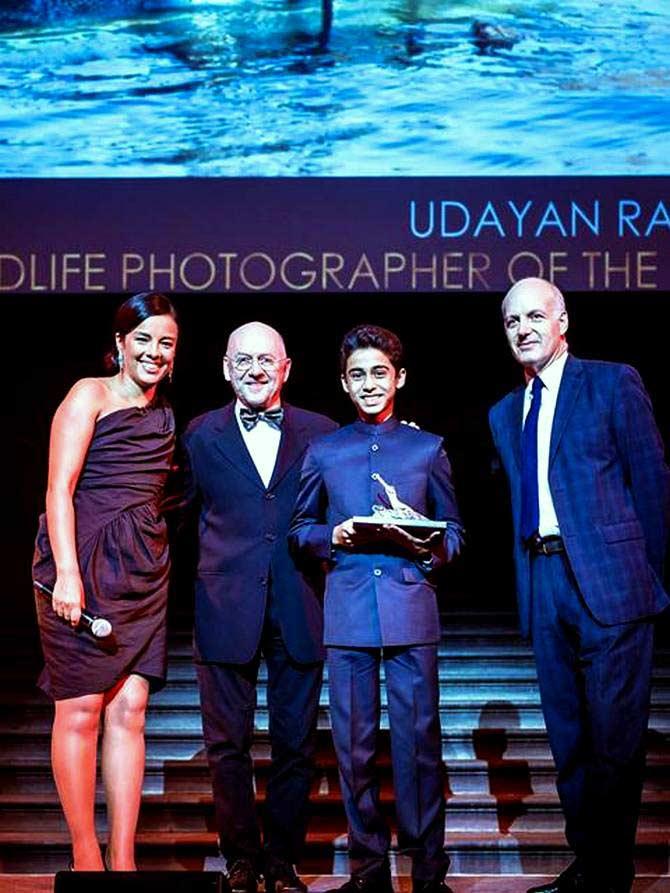

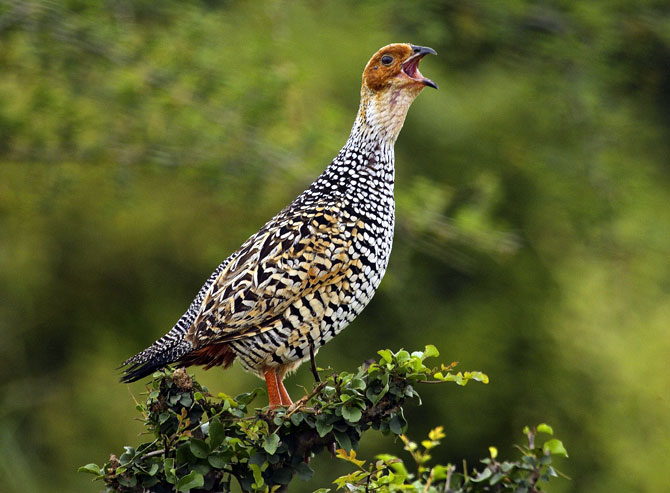
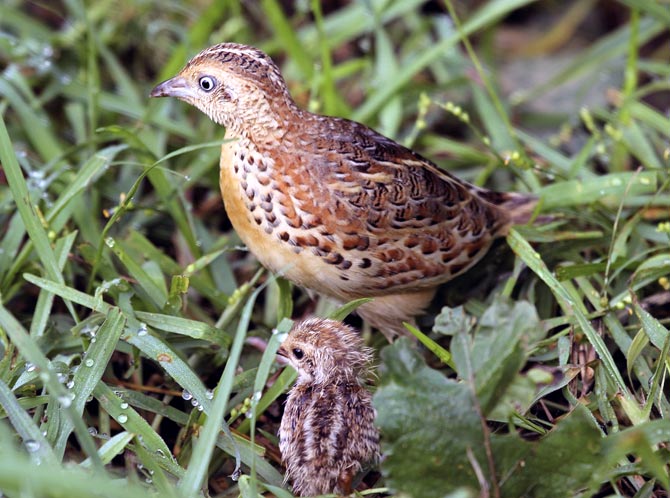
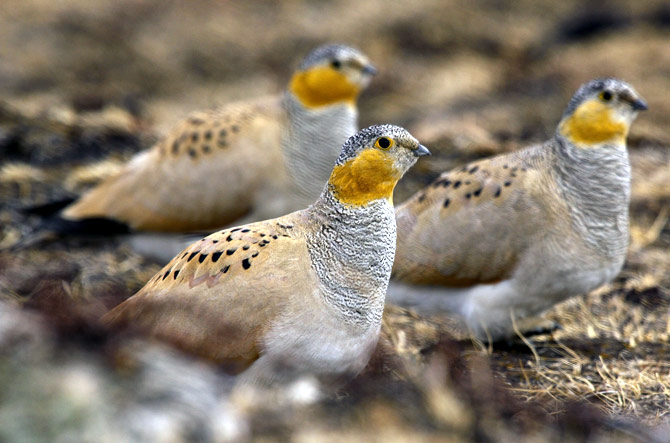
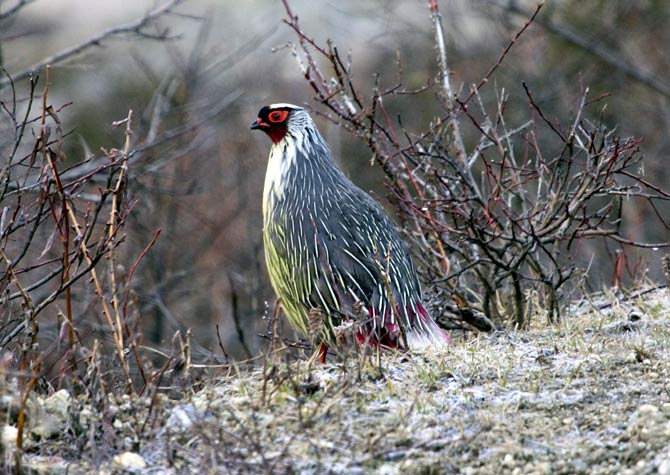
Comment
article